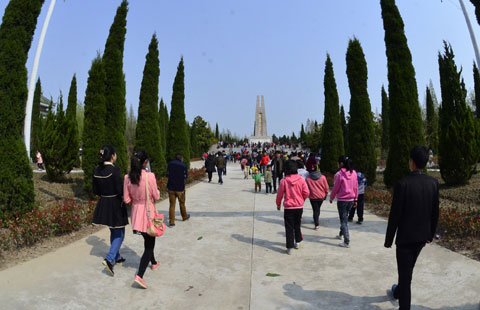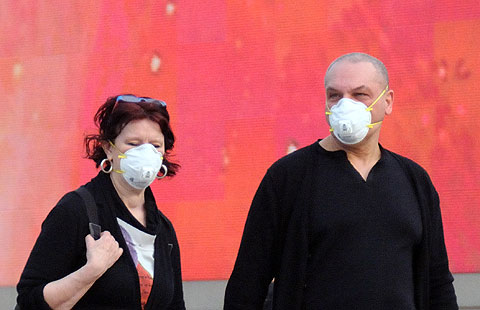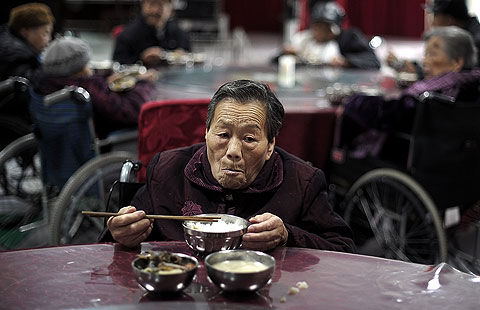Dissecting a controversial film
Updated: 2014-04-28 07:20
(China Daily)
|
|||||||||||
The Wind Rises, an animation film that topped the box office in Japan last year, has created a controversy. The director's intention, however, is not to deconstruct the life of the real-life hero, instead, it is to tell his "love story" and use the film as a medium to interpret a profound theme, says an article on guancha.cn. Excerpts:
The Wind Rises, the latest work of Japanese animator Hayao Miyazaki, tells the story of Jiro Horikoshi who designed Japan's feared Zero fighter planes, which Japanese forces used in World War II and other military campaigns. The planes (and by default, Horikoshi) contributed to the "social tide" in Japan at that time.
In the film, Horikoshi seems to have an innate passion for planes, which had nothing to do with society or the public. His obsession with aircraft manufacturing as an adult is, therefore, the natural result of his individual ideas.
But the film also shows the responsibility and care Horikoshi had for society, especially the disadvantaged people. This could be interpreted as Miyazaki's attempt to add some human touch to the hero. But it also reminds the audience that Horikoshi was not an inward-looking nerd, indulging in his own fancies and hell-bent on fulfilling his dreams. The film portrays him as an individual who knew the possible consequences of his actions on society.
Kiro Honjo, another aircraft designer and colleague of Horikoshi is quite an interesting character in the film. As an individual, Honjo was totally different from Horikoshi. She was both a demonstrative young cynic and nationalist with a strong elite trait who kept reminding Horikoshi about the responsibility young Japanese elites should shoulder.
Conversations between the two, and Horikoshi's response - intensifying his efforts to catch up with his German counterparts in aircraft manufacturing - demonstrate that, even though the hero seemingly lived in his own world, he had been working hard to fit into the role he was supposed to play in society. Every word Honjo says is like voiceover, revealing the gradual integration of Horikoshi's self identity and collective identity in a belligerent society.
Horikoshi has been well portrayed as an elite character in "pre-war Japan" who also took positive social actions. The positive and well-intentioned actions of the film's hero, at the individual level, have to be appreciated given the special historical background. But it is difficult to accept the fact that the actions of one man alone led to terrible consequences, which is exactly what the generation of intellectuals immediately following World War II felt.
That generation, including the pioneers of Japanese comics and animation, sought to build a "Utopia". A "world of wasteland" dominated aesthetics in postwar left-wing art, which gave rise to the utopian world of "eternal peace" - and this is what Miyazaki's works as a whole represent. But in The Wind Rises, he seems to deviate a little from this logic, nay from his usual pattern. The many characters and the form of nature that surround the beautiful things in Horikoshi's life are mere illusions that he has created to escape from real problems. He does so to console himself that he is still a nice man, and does takes a road of no return.
In a way, The Wind Rises could be considered a farewell to Utopia in Miyazaki's works. Miyazaki sticks to his principle of not depicting cruelty to show how cruel wars are. This should be a special lesson for people in these times when the best-selling animation works in Japan compete with each other in depicting violent war scenes, which unfortunately has not been condemned.
The opinions expressed on this page do not necessarily reflect those of China Daily.
(China Daily 04/28/2014 page11)
Today's Top News
Experts: Patent process needs update
Xi calls for action against terrorism
S Korean PM resigns over disaster
Easier visas to attract Chinese
Officials praise ASEAN-China ties
G7 statement on further sanctions against Russia
Danish Queen read stories for children
Ukraine seeks closer ties with China
Hot Topics
Lunar probe , China growth forecasts, Emission rules get tougher, China seen through 'colored lens', International board,
Editor's Picks

|

|

|

|

|

|





